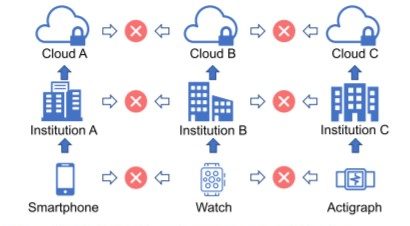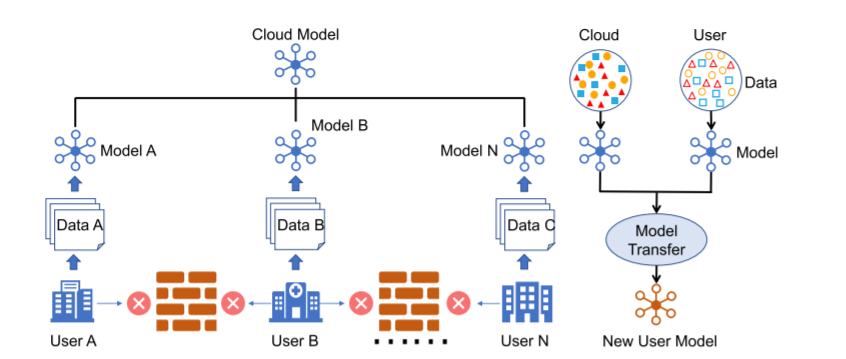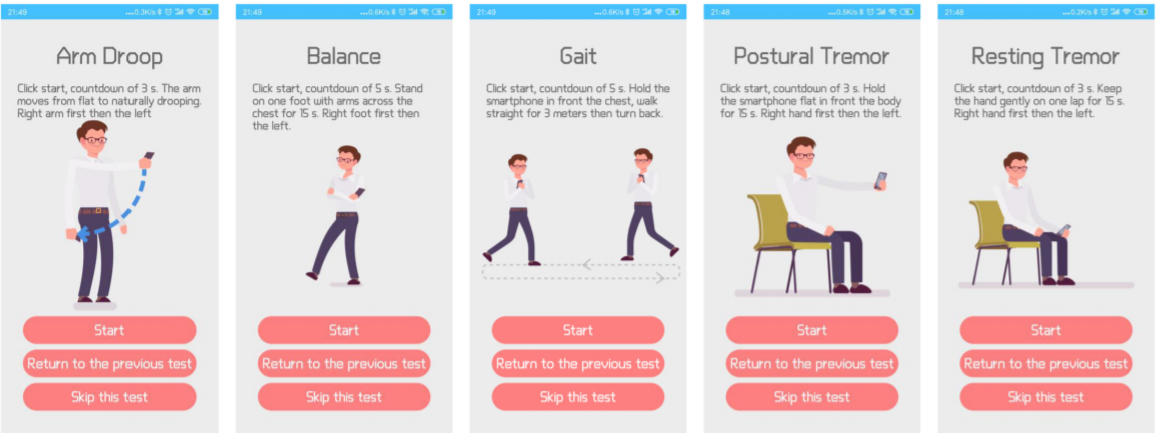Improved patient care, rehabilitation and disease management are just some of the ways wearable devices have transformed the healthcare industry. The data generated by these devices has created new ways for detecting early warning signs of several cognitive diseases, but has also sparked debate on lack of privacy and personalization. That’s why researchers from China have started using federated learning to build a more personalized healthcare framework for wearables that mitigates the risk of compromising users’ privacy and security. This framework is called FedHealth.
Machine learning (ML) models are the foundation of today’s wearable applications. By leveraging data, these models or algorithms can be trained to better diagnose the condition of a person wearing a smart device. However, if engineers hope to evolve and unlock new dimensions in wearable healthcare, they need to rethink their approach to data collection.
As illustrated in Figure 1, user data is very confined and isolated, making it difficult to aggregate and develop smarter systems. While there is plenty of information readily available within different organizations, privacy restrictions and security regulations prohibit them from sharing data with each other. On the other hand, ML models fail to take into consideration the different characteristics and habits of a given user. Current models are based on a common server that lies in the cloud. Once the model is trained using existing user information, it’s then deployed to all devices within that organization. This makes it almost impossible to personalize the healthcare experience.

Figure 1: Data islanding and personalization problems in wearable healthcare
The team’s FedHealth framework is designed to address the vulnerabilities in today’s healthcare landscape. Through federated learning and homomorphic encryption, FedHealth aggregates data from separate organizations to build powerful machine learning models that preserve users’ privacy.
“FedHealth is the first work that uses federated and transfer learning to achieve personalized healthcare solutions,” said Jindong Wang from the Chinese Academy of Sciences and a researcher at Microsoft Research. “Our framework is more flexible and practical in real applications. It can protect the privacy of users by not sharing their raw data, but instead, the parameters needed to help train the [ML] models.”
According to Jindong, the framework mainly consists of four factors. First, the cloud model on the server is trained based on public datasets. It’s then distributed to all users where they can train the model using their own data. Once that’s achieved, the model can be uploaded to the cloud to help create a new cloud model through model aggregation. Once the cloud model is created, FedHealth leverages transfer-learning techniques to achieve personalized model learning for each organization. The team’s framework is outlined in Figure 2.

Figure 2: Overview of the team’s FedHealth framework where “user” represents an organization
Federated learning solves the data isolation problem by allowing ML models to be built using a combination of user data. Once new data is obtained, FedHealth can update the user model and cloud model simultaneously. As such, the longer a user uses a wearable device or application, the more personalized the model can be.
To prove FedHealth’s effectiveness, the team used Parkinson’s disease as a real-world scenario to test their framework. They developed a smartphone application that monitored and collected data from more than 130 patients between the ages of 19-87. Five symptoms related to the disease were studied, including arm droop, balance, gait, postural tremor, and resting tremor. For each test, a healthcare professional ranked the symptoms from normal to severe. The detailed description and interfaces of these tests are shown in Figure 3.

Figure 3: The main interfaces of the team’s symptom tests in the smartphone application
While FedHealth is not currently being deployed, it does open up new avenues for wearable healthcare applications. In fact, according to Jindong, the framework could be used to diagnose other diseases and illnesses, such as COVID-19, through chest X-ray images. As a next step, the team plans to extend FedHealth with incremental learning to achieve more personalized and flexible healthcare results.
For more information on wearables and machine learning, visit the IEEE Xplore digital library.





